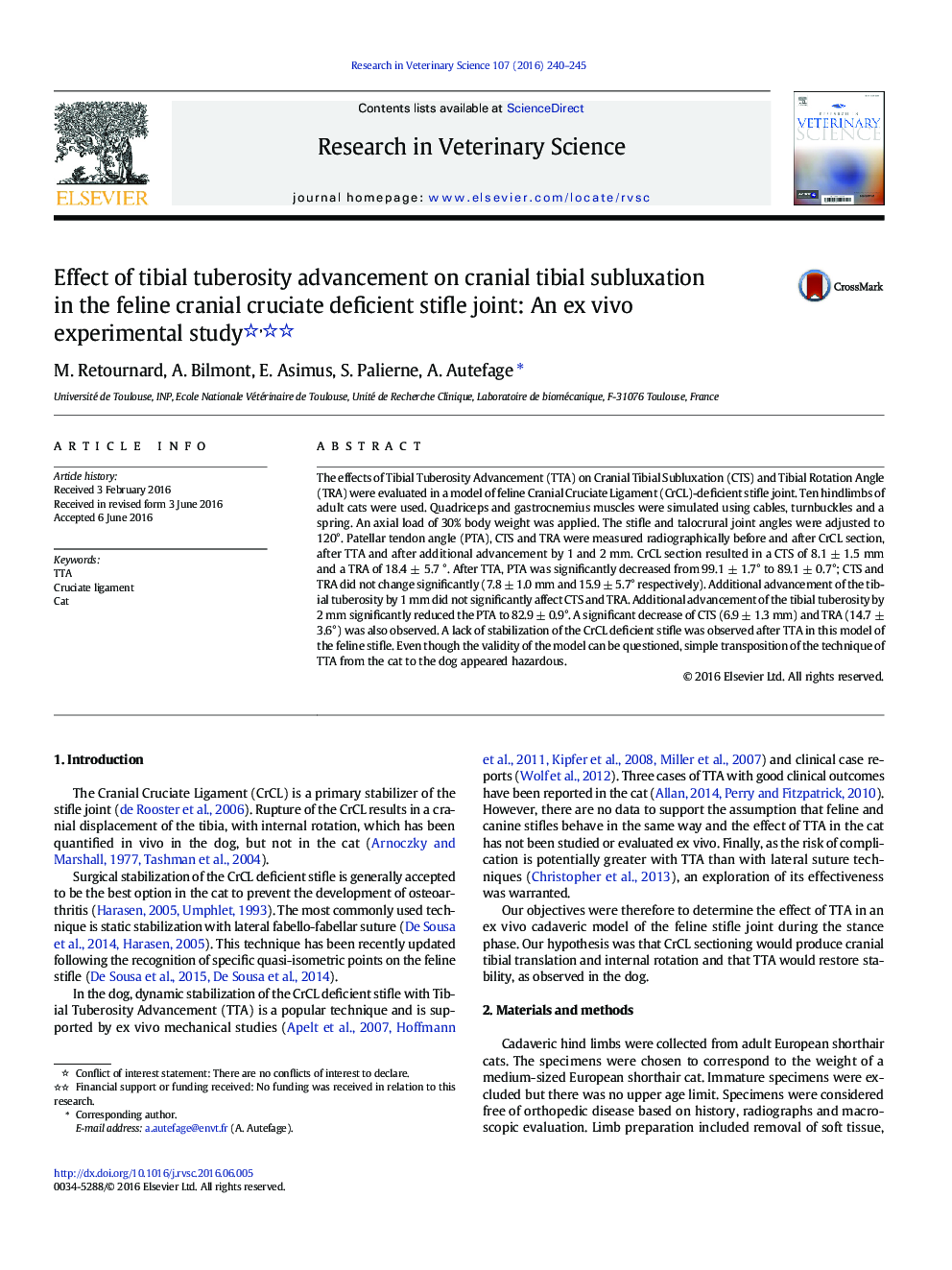| Article ID | Journal | Published Year | Pages | File Type |
|---|---|---|---|---|
| 5794456 | Research in Veterinary Science | 2016 | 6 Pages |
â¢CrCL sectioning resulted in cranial tibial subluxation and internal tibial rotationâ¢Cranial tibial subluxation and internal tibial rotation were not significantly decreased after TTAâ¢This model of the feline stifle failed to demonstrate a positive effect of TTA
The effects of Tibial Tuberosity Advancement (TTA) on Cranial Tibial Subluxation (CTS) and Tibial Rotation Angle (TRA) were evaluated in a model of feline Cranial Cruciate Ligament (CrCL)-deficient stifle joint. Ten hindlimbs of adult cats were used. Quadriceps and gastrocnemius muscles were simulated using cables, turnbuckles and a spring. An axial load of 30% body weight was applied. The stifle and talocrural joint angles were adjusted to 120°. Patellar tendon angle (PTA), CTS and TRA were measured radiographically before and after CrCL section, after TTA and after additional advancement by 1 and 2 mm. CrCL section resulted in a CTS of 8.1 ± 1.5 mm and a TRA of 18.4 ± 5.7 °. After TTA, PTA was significantly decreased from 99.1 ± 1.7° to 89.1 ± 0.7°; CTS and TRA did not change significantly (7.8 ± 1.0 mm and 15.9 ± 5.7° respectively). Additional advancement of the tibial tuberosity by 1 mm did not significantly affect CTS and TRA. Additional advancement of the tibial tuberosity by 2 mm significantly reduced the PTA to 82.9 ± 0.9°. A significant decrease of CTS (6.9 ± 1.3 mm) and TRA (14.7 ± 3.6°) was also observed. A lack of stabilization of the CrCL deficient stifle was observed after TTA in this model of the feline stifle. Even though the validity of the model can be questioned, simple transposition of the technique of TTA from the cat to the dog appeared hazardous.
